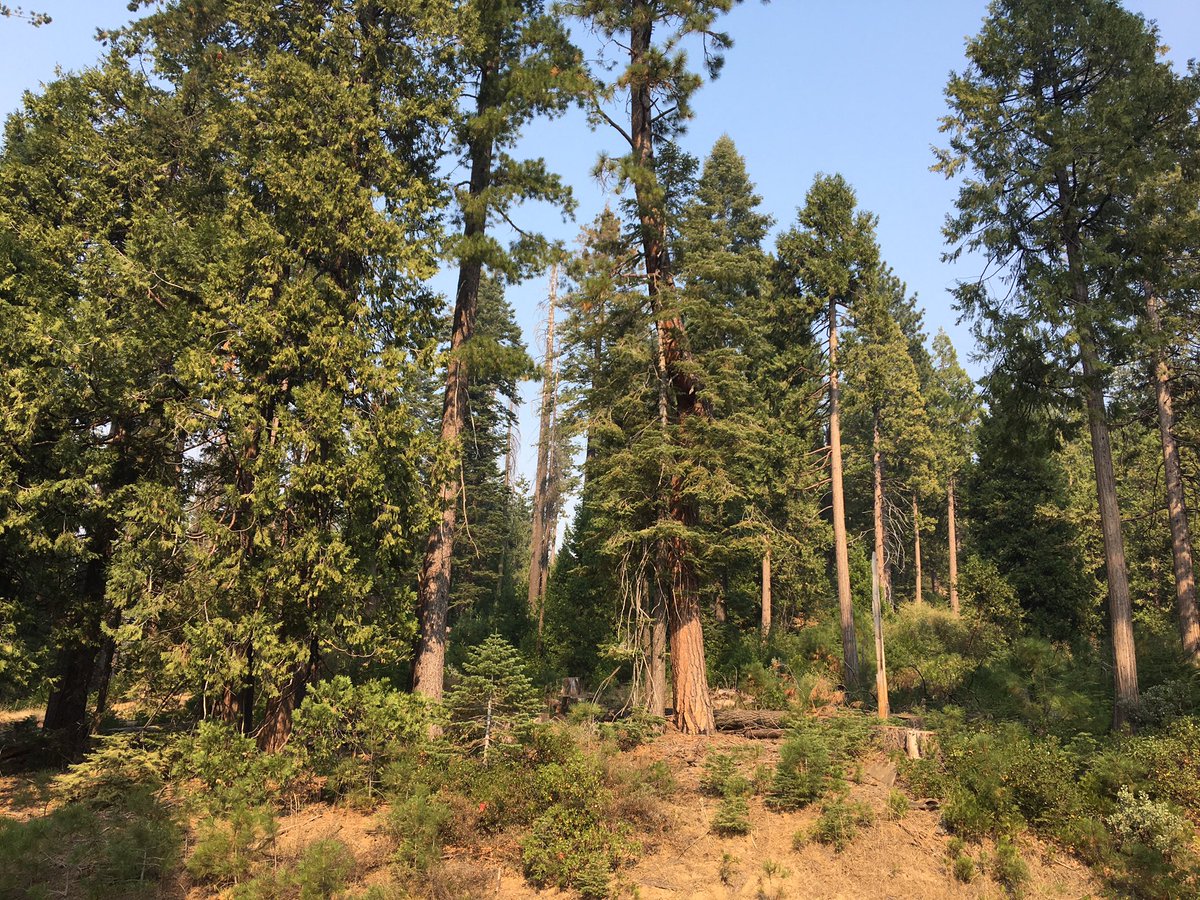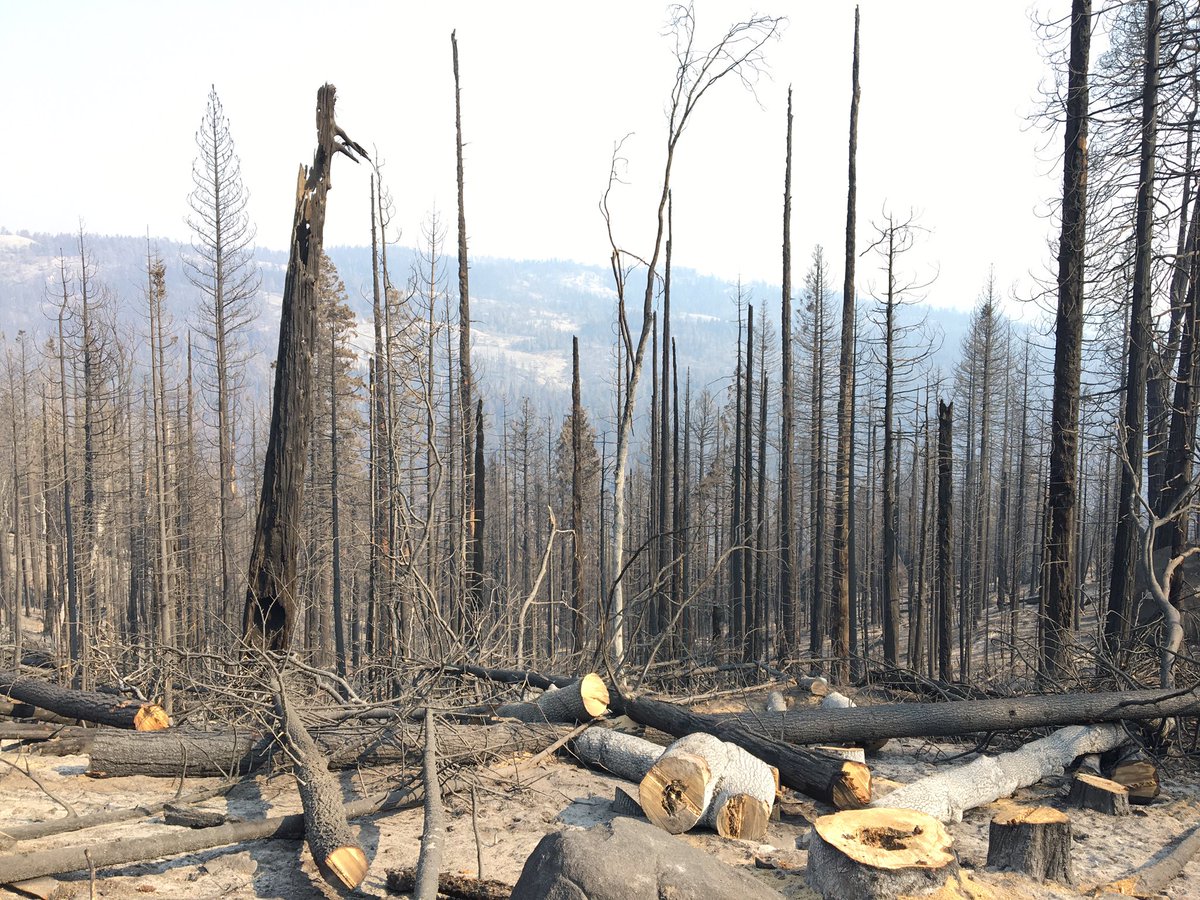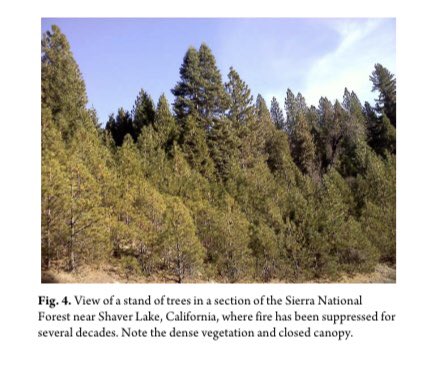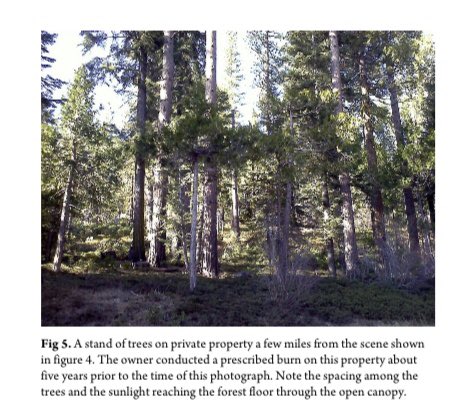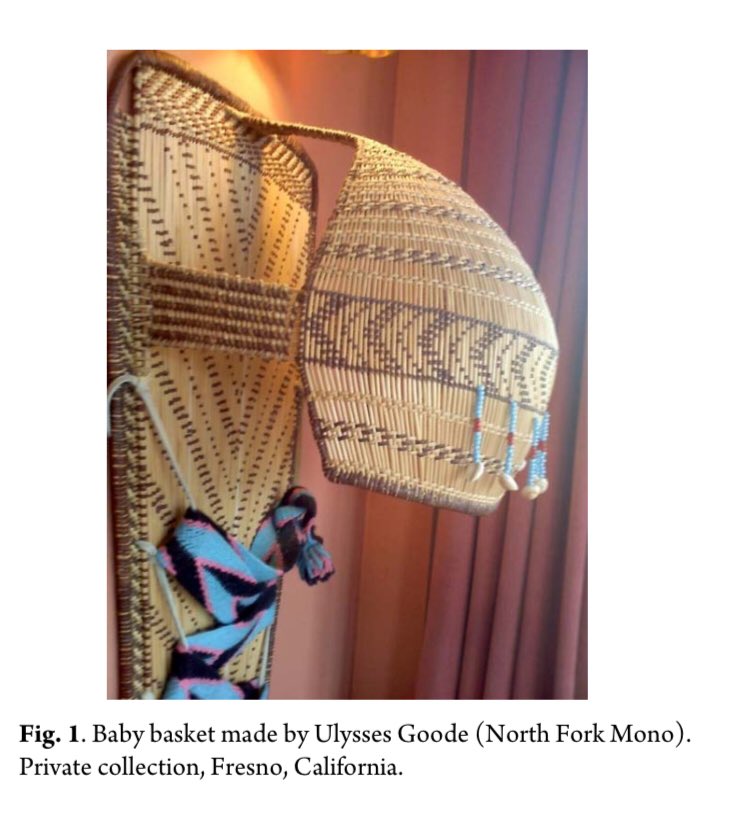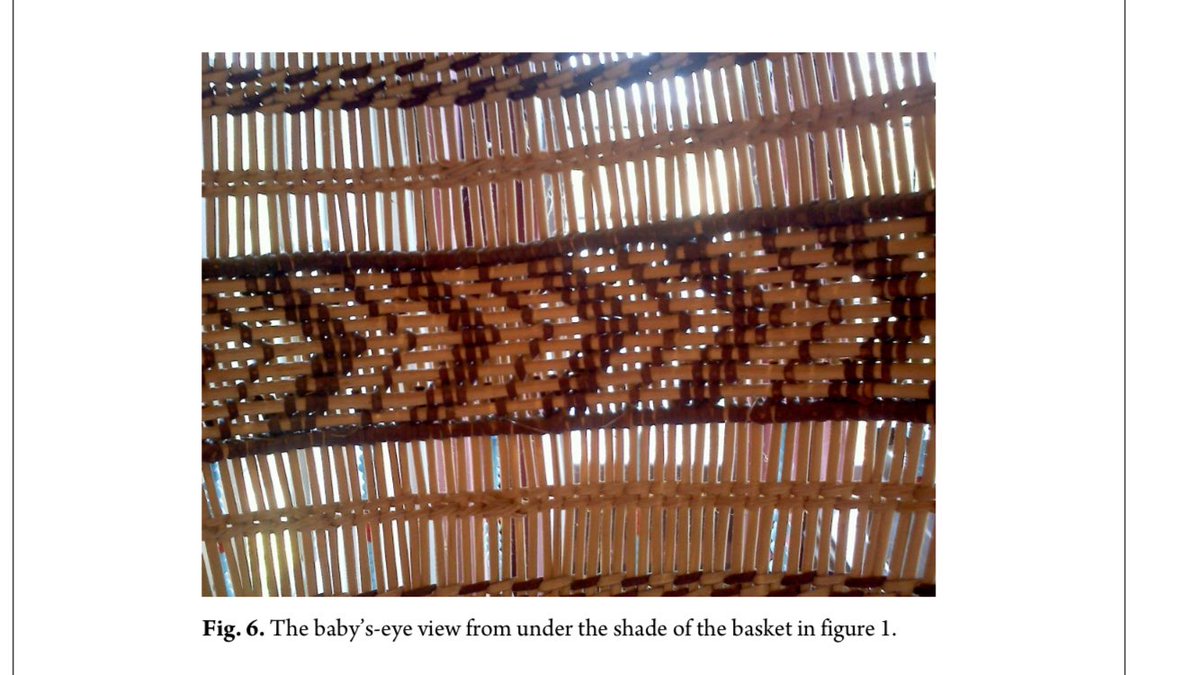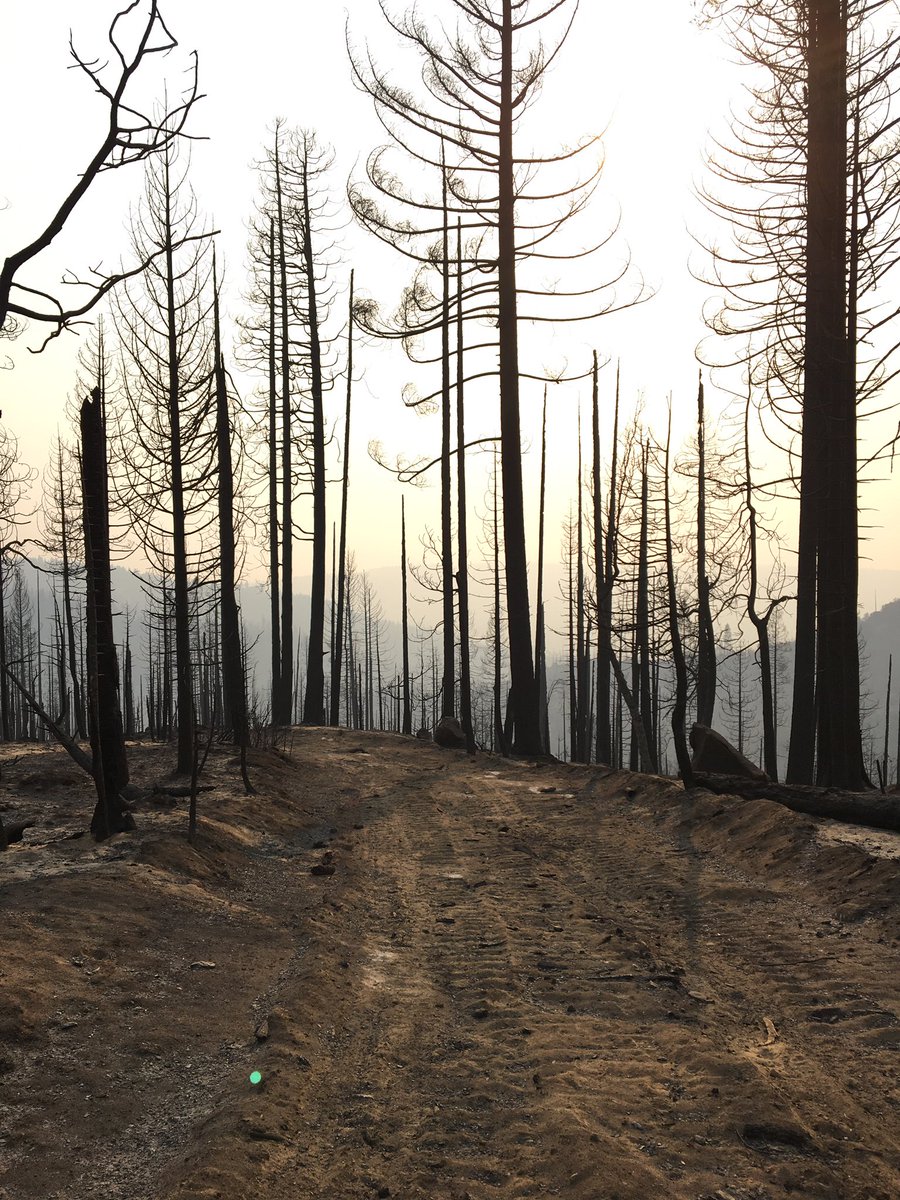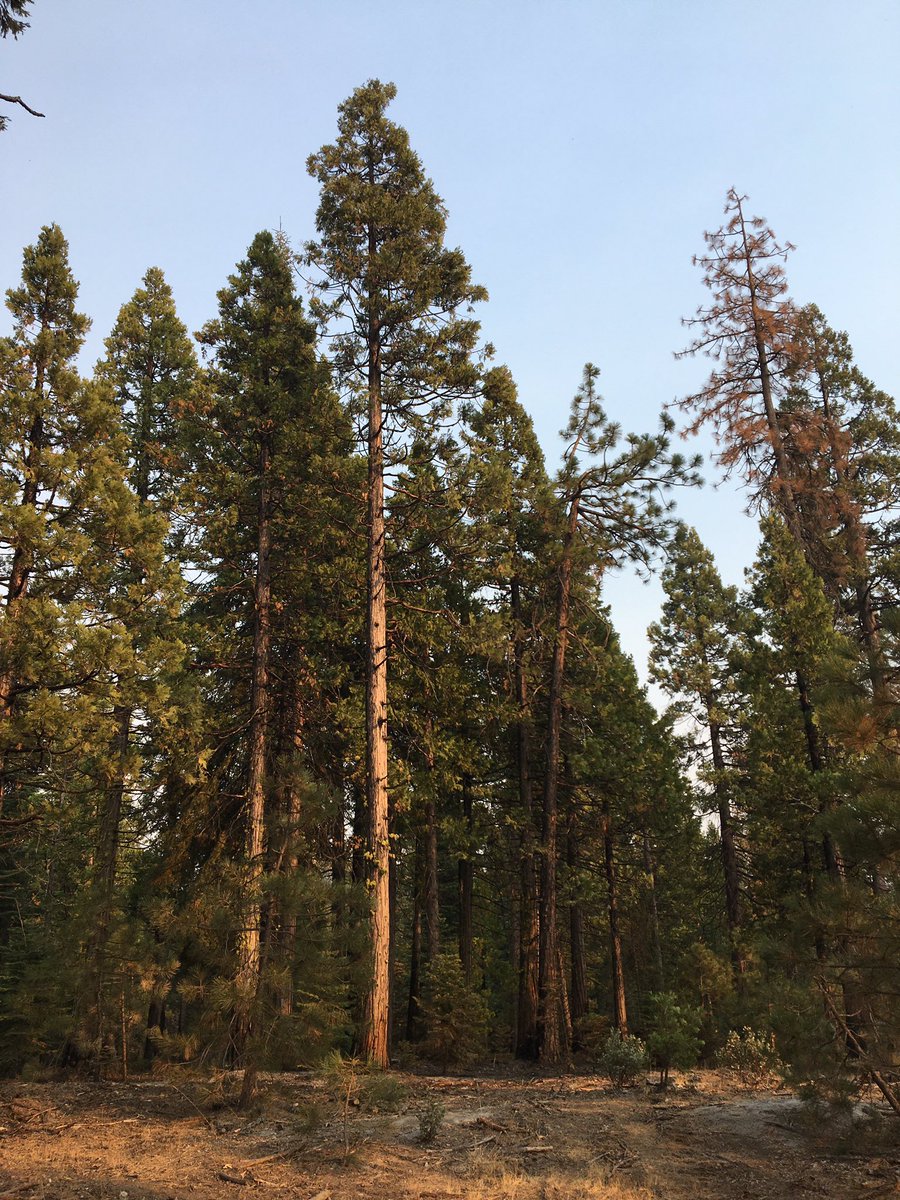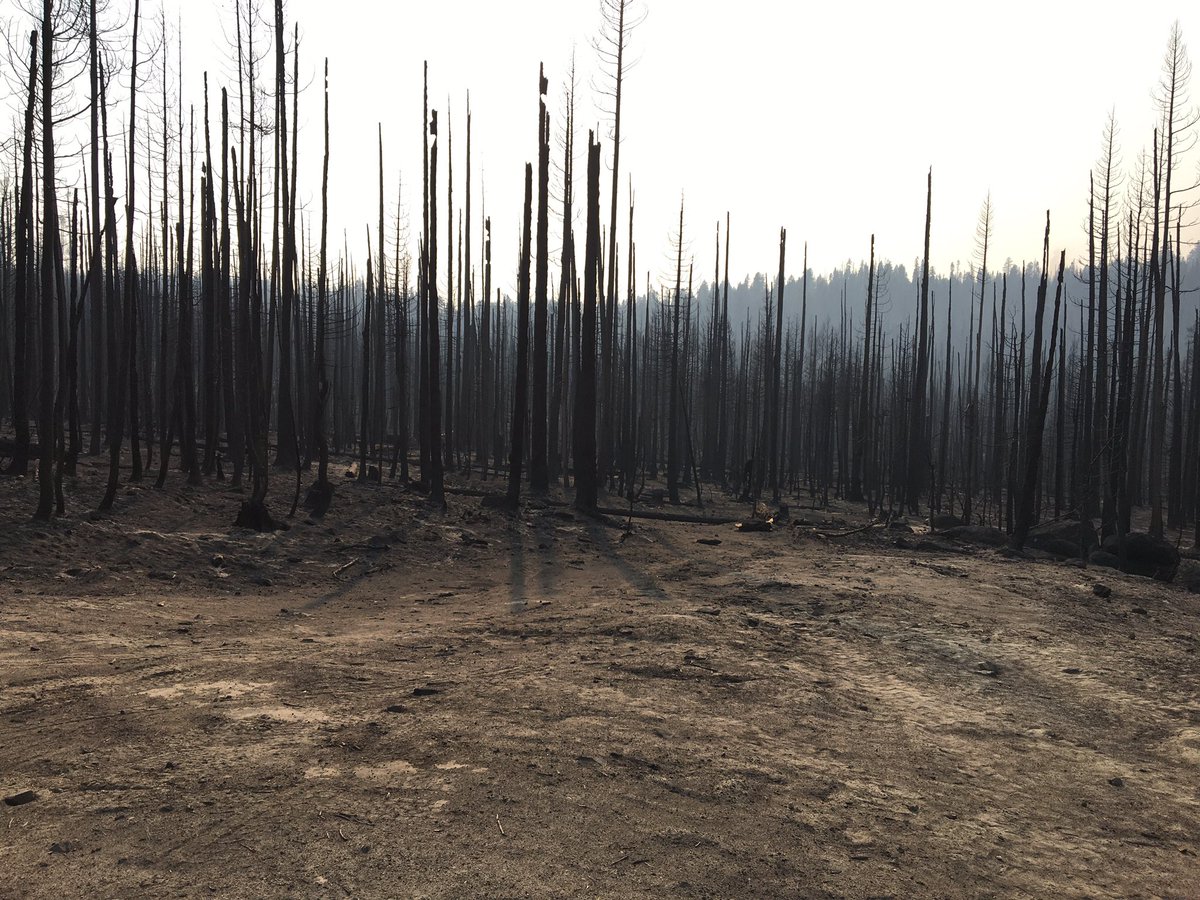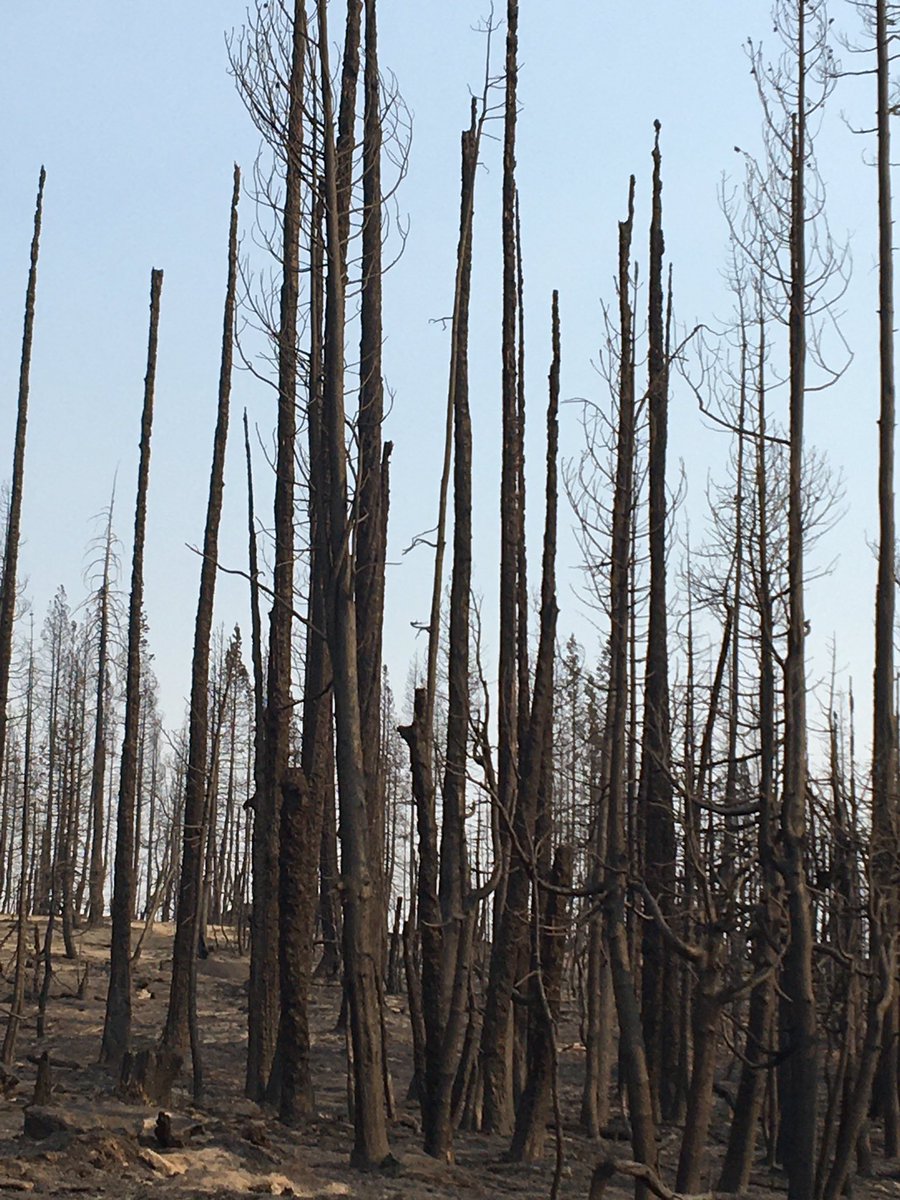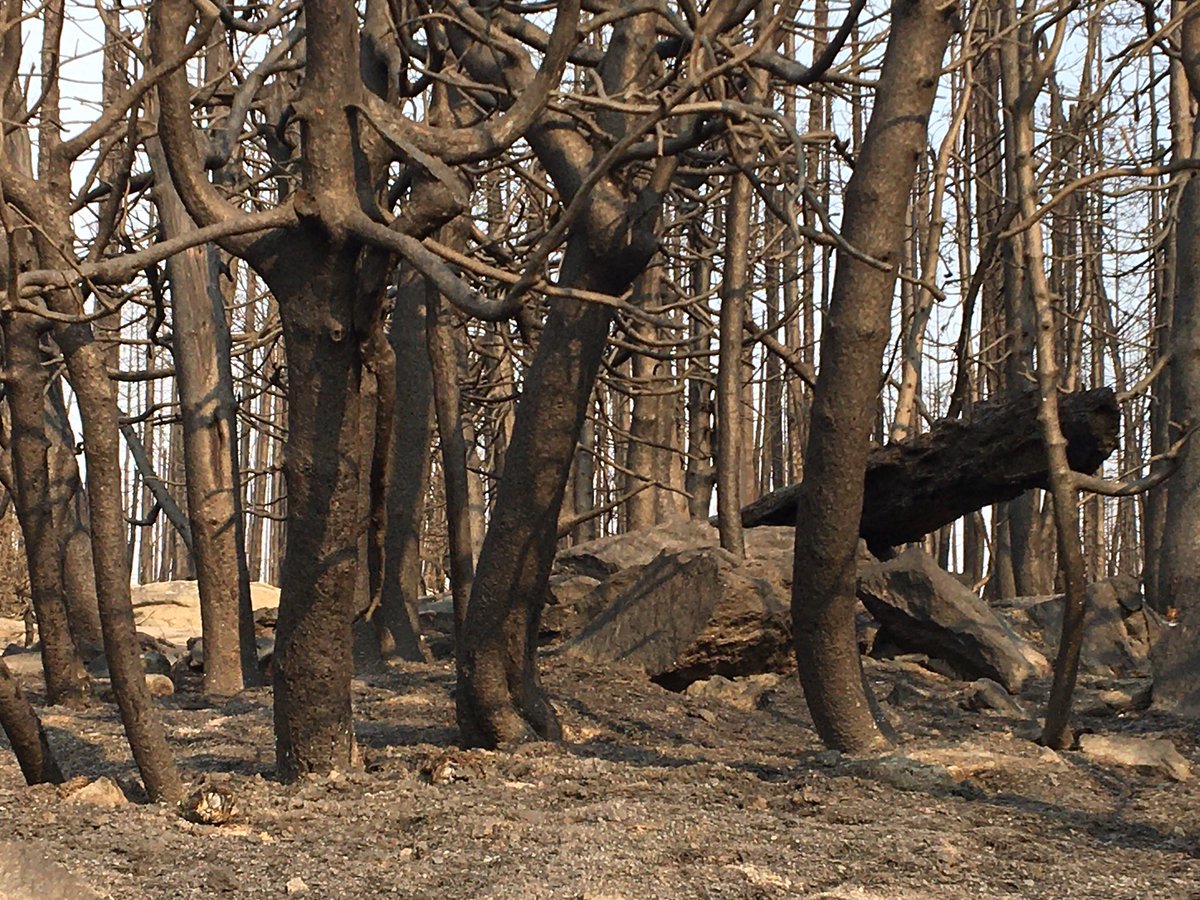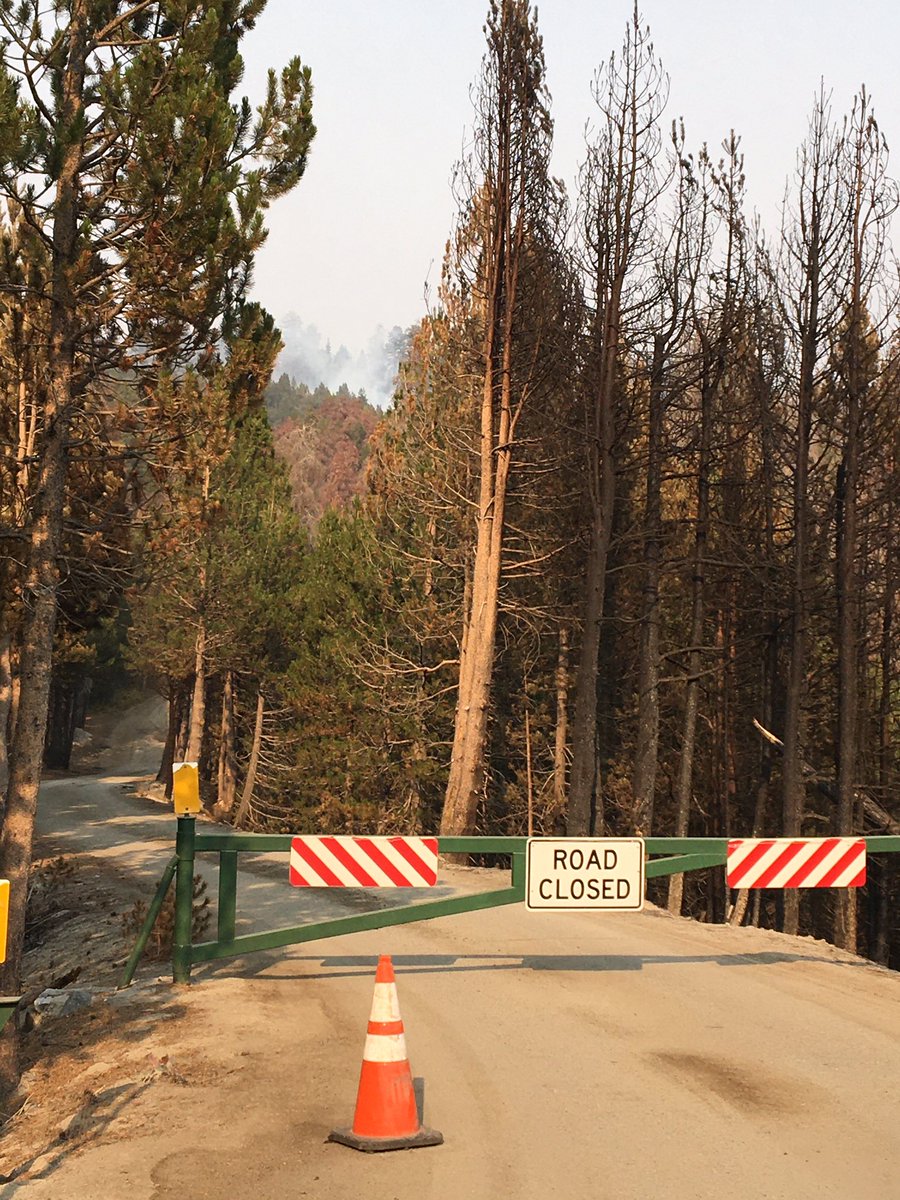I had a chance to drive up to visit the forestry department @SCE today & see how Edison land fared in the Creek Fire compared to adjacent federal land. This will be a thread with connections to Indigenous #LandBack but it will take me a few hours to complete the whole thread. 1/
Photos I published in 2013 in Occasion @StanfordArcade ( https://arcade.stanford.edu/sites/default/files/article_pdfs/OCCASION_v05i01_Aldern_040714.pdf)">https://arcade.stanford.edu/sites/def... show the pre-fire contrast btw SCE land & natl forest. I made an analogy between a healthy forest, that, as Ron Goode says, “you can see through” and a Mono basket that a baby can see through. 2/
Ron Goode, Chairman of the North Fork Mono Tribe, pointed out the contrast btw SCE and SNF forests to me but before going further w/ that contrast, let’s take a brief look at how Nium or North Fork Mono knowledge is conveyed. 3/
Ron Goode can convey knowledge quite directly, as when he approvingly critiques SCE’s forest & fire management practices, when he tells me as I’m burning with him to add more brush to the top of the fire, or when he writes a description of the basic steps in cultural burning. 4/
But most of the body of Nium fire knowledge can’t be conveyed through, say, a series of policy papers or webinars. Nium knowledge can’t be translated into a database for easy access by state, federal, or private land managers. 5/
Nium knowledge flows through multilayered stories that reward many, many repeated readings or listenings. It flows through the form and structure of those stories, just as the structure of a basket might begin to give an infant some sense for the structure of a healthy forest. 6/
Absolutely most important, however — and here’s where I’m going to wind this thread back to SCE and then the Creek Fire — is to realize, really, the only way to learn from Nium and other Indigenous practitioners is to build partnerships and work with them. #LandBasedLearning 7/
SCE’s forestry dept takes an approach to forestry w/ some resemblances to — but still far from identical to — Indigenous pyrosilviculture. It’s like their practices have undergone parallel or convergent evolution to arrive at a place where tribes & SCE can see commonalities. 8/
Of course, SCE owns 20,000 acres in the south-central Sierra that tribes don’t own. That’s why SCE’s example of land stewardship is so important in the aftermath of the Creek Fire and why strengthening collaborations and learning exchanges with tribes will be crucial. 9/
Giving #LandBack to tribes can start w/ opening land for co-management. Ok, now for a few more of the dramatic contrasts I saw today up the hill near Shaver Lake. Near the community center, the fire charged in as a canopy fire & then dropped into an underburn at SCE’s forest. 10/
I don’t think it’s a stretch to say SCE land played a huge role in saving houses at Shaver Lake. It was more than a speed bump in the fire’s path. Ryan Stewart of SCE said a better comparison would be to one of those runaway truck ramps on the north side of the Grapevine. 11/
I think this is going to be all I have time or energy for tonight. The fire blasted national forest land along Hwy 168 above Shaver was a sobering sight. 12/
This was the end of the road for me today, just below China Peak, w/ a smoke plume in the distance. Lemme just say again, #LandBack, #FireBack, #WaterBack, #TrailsBack, & I hope I can play a role in making things right through #EnvHum, #EnvHist, & the Sierra-Sequoia Burn Coop. 13

 Read on Twitter
Read on Twitter